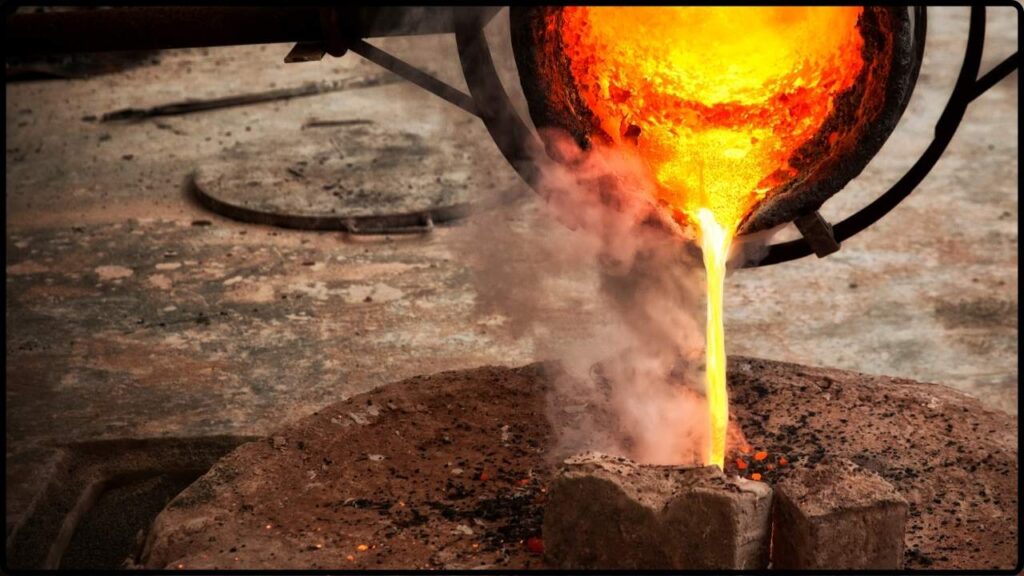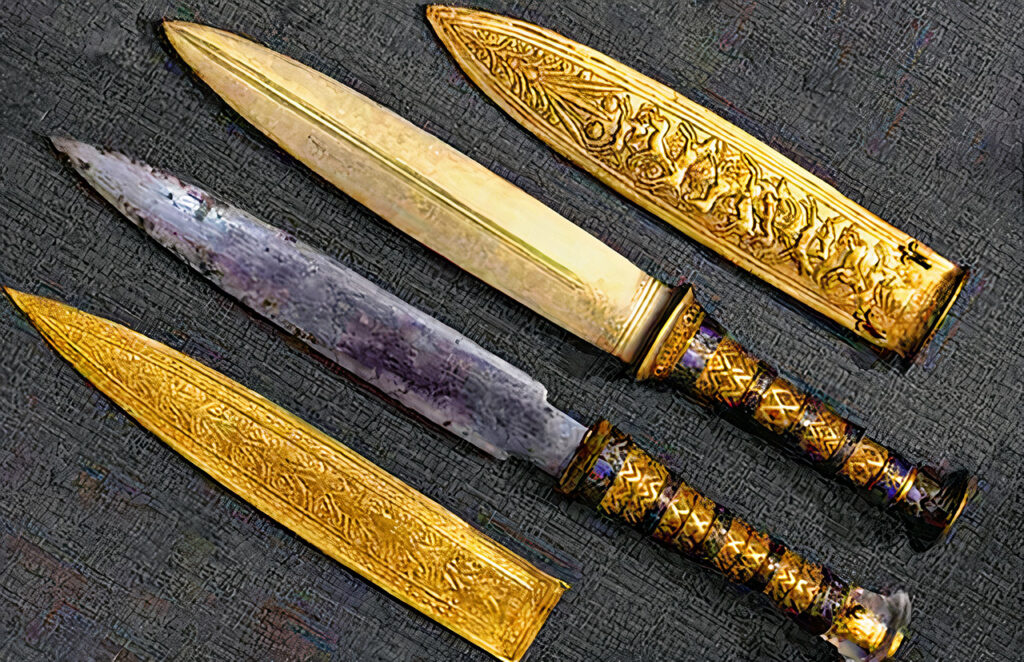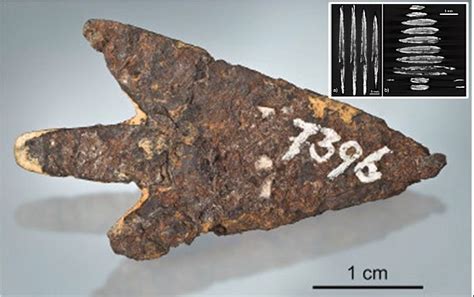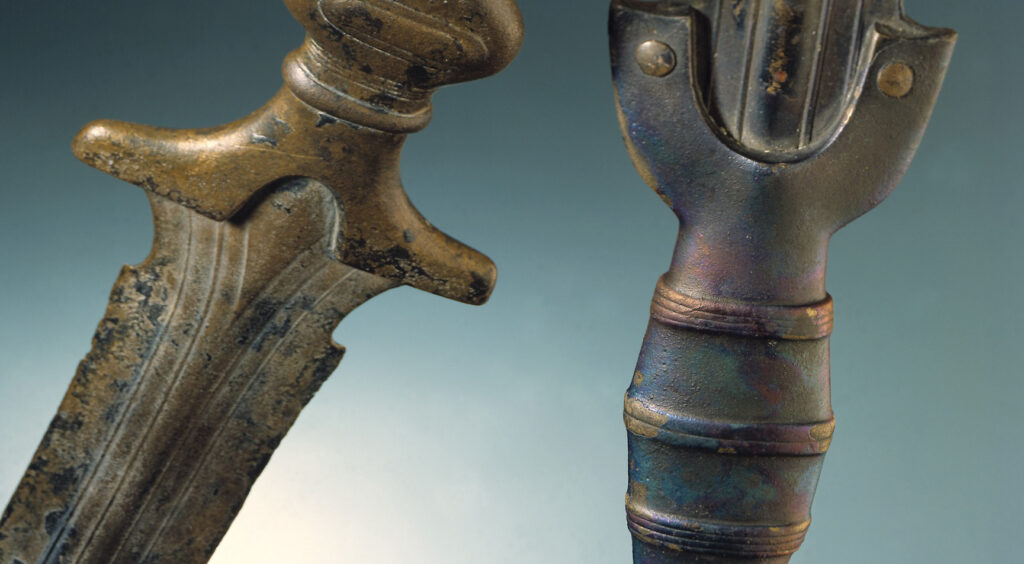
Bronze Age Tools Were Forged From Meteorites: Long before the age of smartphones, skyscrapers, and AI, ancient humans were doing something that feels straight outta science fiction: they were crafting tools and weapons from meteorites. Yeah, real deal outer space metal. And no, this ain’t just a cool campfire tale. Recent studies, including peer-reviewed work published in Nature and Scientific Reports, confirm what archaeologists and star-gazers have suspected for decades—early civilizations used meteoritic iron to forge objects long before smelting was a thing. This might just flip everything you thought you knew about the Bronze Age.
Bronze Age Tools Were Forged From Meteorites
The story of meteoritic iron tools proves that even in the so-called “dark” early days, our ancestors were incredibly smart, resourceful, and connected to the skies above. They weren’t just banging rocks—they were working with gifts from the stars. From Egypt to Estonia, from royalty to warriors, meteoritic tools carry both scientific weight and spiritual wonder. They remind us of a time when humans looked up at the stars—and quite literally pulled them down to Earth.
| Topic | Details |
|---|---|
| Main Discovery | Bronze Age tools were forged using meteoritic iron, not Earth-sourced materials |
| Famous Artifact | King Tut’s dagger (1330 BCE) was made from a meteorite |
| Key Location | Mörigen Arrowhead (Switzerland) traced to Estonia’s Kaali meteorite |
| Scientific Methods | XRF, SEM-EDS, and mass spectrometry confirmed meteoritic origin |
| Why It Matters | Reveals early human use of celestial materials, advanced trade, and proto-metallurgy |
| Earliest Use | Around 3200 BCE (Gerzeh, Egypt) |
| Official Source | NASA on Meteorites |
| Career Insight | Relevant to archaeology, history, geology, materials science, and aerospace metallurgy |
What’s the Big Deal About Meteorites in the Bronze Age?
Here’s the scoop: the Bronze Age (roughly 3300–1200 BCE) was a time when humans primarily worked with bronze—a metal made by mixing copper and tin. Iron? That wasn’t in common use yet. Smelting iron requires intense heat—over 2,800°F (1,538°C)—which was out of reach for most ancient cultures.
But meteorites? They dropped that pure iron, pre-forged by the cosmos, right onto the Earth’s surface.
What’s wild is that our ancestors recognized how valuable this metal was, even though it was rare and mysterious. Instead of ignoring it, they used it. That’s innovation, plain and simple.
Let’s Talk Famous Examples

King Tutankhamun’s Meteorite Dagger
Unearthed from the Egyptian pharaoh’s tomb (dated around 1330 BCE), the blade was a standout from the beginning—not just for its craftsmanship but for its unusually high nickel content. Tests confirmed it matched meteorite composition: 11% nickel and 0.6% cobalt, almost exactly like known iron meteorites.
Scientists used X-ray fluorescence (XRF) and spectrometry to verify this. The dagger wasn’t just royal—it was celestial.
The Mörigen Arrowhead (Switzerland)
In 2023, a study published in Scientific Reports revealed that a rusted arrowhead found in Lake Biel near the ancient Swiss site of Mörigen was made from meteoritic iron.
Using advanced scanning electron microscopy and chemical fingerprinting, researchers matched its material to the Kaali meteorite crater in Estonia—over 1,200 miles away.
This isn’t just cool. It shows there were complex trade routes and that Bronze Age cultures valued and transported meteorite materials.

Villena Hoard (Spain)
Dating back to around 1300–1000 BCE, this treasure trove of gold, silver, and iron objects included two confirmed meteoritic items—a bracelet and a sphere—suggesting that celestial iron was used in elite ceremonial contexts across Europe.
How Do We Know Bronze Age Tools Were Forged From Meteorites?
Great question! Scientists today use tools like:
- X-ray fluorescence (XRF) to analyze surface-level elemental composition
- SEM-EDS (Scanning Electron Microscopy with Energy Dispersive Spectroscopy) to look at structure and deep elemental data
- Mass spectrometry to match isotope patterns to known meteorite samples
Meteoritic iron has telltale signs: high nickel (5–20%), cobalt, and sometimes germanium or gallium. Earth’s iron ores don’t show this combo—so if it’s got the space flavor, scientists can tell.
Bonus? Meteoric iron often displays Widmanstätten patterns—a kind of crystalline fingerprint you only get from cooling over millions of years in space.
Timeline: Use of Meteoric Iron Before Iron Smelting
Here’s how early folks got their hands on this precious sky metal:
- 3200 BCE – Gerzeh, Egypt: Beads made from hammered meteorite were found in burial sites.
- 2500 BCE – Turkey/Syria: Tools and ceremonial items identified with meteoritic iron.
- 1300 BCE – Spain, Egypt: King Tut’s dagger and the Villena Hoard.
- 900–800 BCE – Switzerland: Mörigen Arrowhead shows the practice continued for centuries.
So, we’re talking over 1,500 years of meteorite metal use before humans could even smelt regular iron.
Why Did They Use It?
Simply put: because they could.
Meteorites landed in fields and deserts with ready-made metallic iron-nickel cores. Unlike Earth’s ore, which is embedded in stone, this was already solid, usable iron—it just needed shaping.
Plus, its rarity gave it value. Some archaeologists believe meteoritic tools were used in:
- Religious rituals
- Royal tombs
- High-status weaponry
- Trade between distant cultures
Imagine being a Bronze Age chieftain gifting a star-metal blade to secure an alliance. That’s cosmic diplomacy.

Step-by-Step: How Space Rocks Became Tools
- Impact: A meteorite hits Earth, splinters into fragments.
- Discovery: Locals find shiny, heavy rocks unlike any others.
- Collection: The material is prized and hoarded.
- Forging: Metalworkers hammer it using bronze tools and charcoal fires.
- Shaping: Turned into arrowheads, daggers, or jewelry.
- Trade: Objects move across hundreds, even thousands, of miles.
- Burial & Rediscovery: Thousands of years later, scientists analyze it and go: “Wait a minute…”
Practical Insights for Modern Professionals
For archaeologists, this opens new doors:
- Re-analyze old finds: Some “early iron” artifacts might be meteoritic and misclassified.
- Explore trade: Artifacts can show prehistoric exchange networks.
- Study ancient technology: This isn’t just history—it’s early material science.
For STEM educators, this is an ideal teaching crossover—connecting space science, chemistry, and history.
For engineers, this underscores how metallurgy didn’t begin with furnaces—it began with cosmic serendipity and human creativity.
What Does This Mean for Human History?
The Bronze Age wasn’t as “primitive” as we sometimes assume. These folks:
- Knew how to recognize and value rare materials
- Could trade across continents
- Developed techniques to forge iron without smelting
And they didn’t even have Google.
Not Gold, Not Copper—Egyptians Used Iron From Space in Sacred Objects, New Study Reveals
Not Gold, Not Platinum—This Man’s Mysterious Rock Was Worth More Than Both and Came from Space
Starlink in Trouble? Solar Storms Disrupt Elon Musk’s Satellite Network
Frequently Asked Questions (FAQs)
Did ancient people know the iron came from space?
Not exactly, but many cultures considered it sacred. In Mesopotamian and Egyptian texts, it’s called “iron from the sky.” So yeah, they knew it was special.
How many artifacts are known to be made from meteorites?
As of now, fewer than 100 confirmed artifacts exist worldwide. That makes them rarer than some precious gems.
Why didn’t everyone use meteoritic iron?
Because it was hard to find, didn’t come in large quantities, and was often used for symbolic or elite purposes—not everyday tools.
Are new artifacts still being found?
Yes. Improved technology means older museum artifacts are being re-tested and sometimes reclassified as meteoritic.











